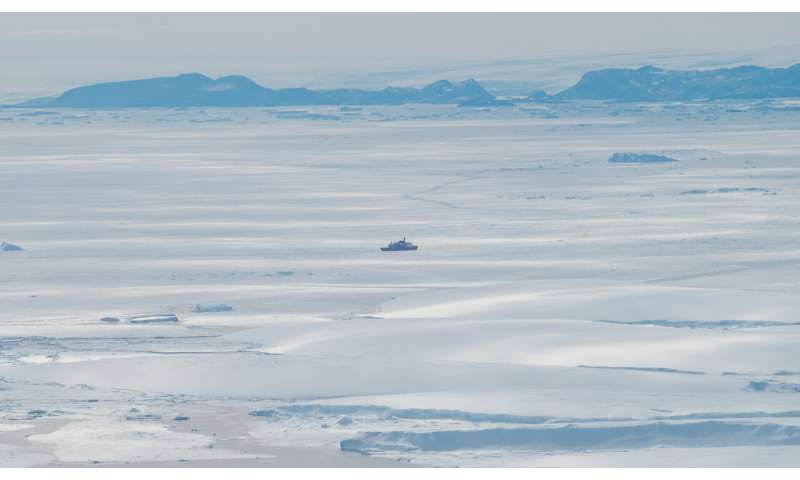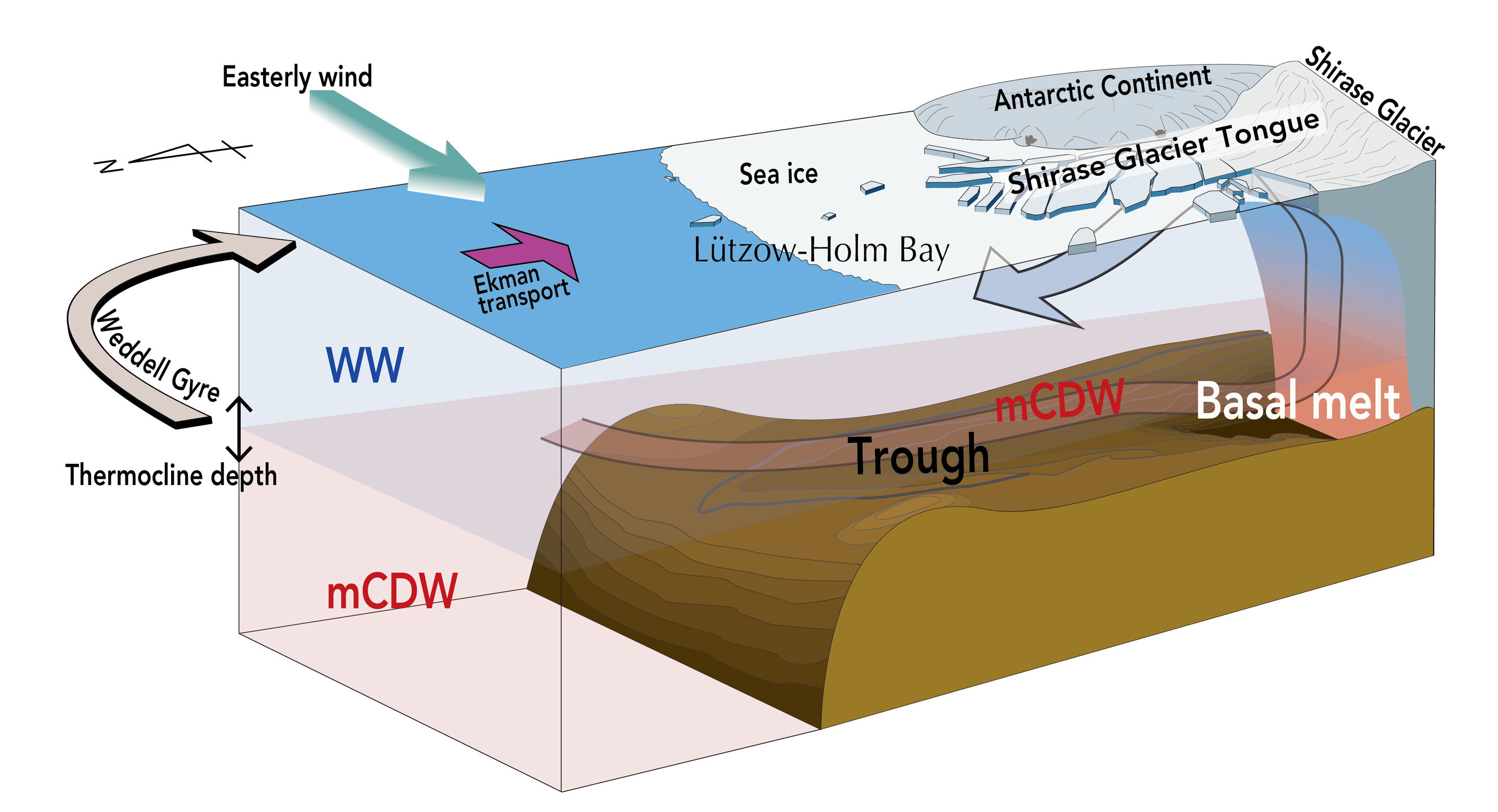Welcome to DU!
The truly grassroots left-of-center political community where regular people, not algorithms, drive the discussions and set the standards.
Join the community:
Create a free account
Support DU (and get rid of ads!):
Become a Star Member
Latest Breaking News
General Discussion
The DU Lounge
All Forums
Issue Forums
Culture Forums
Alliance Forums
Region Forums
Support Forums
Help & Search
Environment & Energy
Related: About this forumVertical Melt Of Shirase Glacier Tongue Fastest In E. Antarctica, Surpassing Even Totten Glacier

Ice is melting at a surprisingly fast rate underneath Shirase Glacier Tongue in East Antarctica due to the continuing influx of warm seawater into the Lützow-Holm Bay. Hokkaido University scientists have identified an atypical hotspot of sub-glacier melting in East Antarctica. Their findings, published in the journal Nature Communications, could advance the understanding and prediction of sea-level rise caused by mass loss of ice sheets from the southernmost continent.
The 58th Japanese Antarctic Research Expedition had a rare opportunity to conduct ship-based observations near the tip of East Antarctic Shirase Glacier when large areas of heavy sea ice broke up, giving them access to the frozen Lützow-Holm Bay into which the glacier protrudes.
"Our data suggests that the ice directly beneath the Shirase Glacier Tongue is melting at a rate of seven to 16 meters per year," says Assistant Professor Daisuke Hirano of Hokkaido University's Institute of Low Temperature Science. "This is equal to or perhaps even surpasses the melting rate underneath the Totten Ice Shelf, which was thought to be experiencing the highest melting rate in East Antarctica, at a rate of 10 to 11 meters per year."

Warm water flows into Luetzow-Holm Bay along a deep underwater ocean trough and then flows upwards along the tongue's base, warming and melting the base of Shirase Glacier Tongue. (Daisuke Hirano et al., Nature Communications, August 24, 2020) Credit: Daisuke Hirano et al., Nature Communications, August 24, 2020
The Antarctic ice sheet, most of which is in East Antarctica, is Earth's largest freshwater reservoir. If it all melts, it could lead to a 60-meter rise in global sea levels. Current predictions estimate global sea levels will rise one meter by 2100 and more than 15 meters by 2500. Thus, it is important for scientists to have a clear understanding of how Antarctic continental ice is melting, and to more accurately predict sea level fluctuations. Most studies of ocean-ice interaction have been conducted on the ice shelves in West Antarctica. Ice shelves in East Antarctica have received much less attention, because it has been thought that the water cavities beneath most of them are cold, protecting them from melting.
EDIT
https://phys.org/news/2020-08-japanese-east-antarctic-hotspot.html
InfoView thread info, including edit history
TrashPut this thread in your Trash Can (My DU » Trash Can)
BookmarkAdd this thread to your Bookmarks (My DU » Bookmarks)
2 replies, 498 views
ShareGet links to this post and/or share on social media
AlertAlert this post for a rule violation
PowersThere are no powers you can use on this post
EditCannot edit other people's posts
ReplyReply to this post
EditCannot edit other people's posts
Rec (5)
ReplyReply to this post
2 replies
 = new reply since forum marked as read
Highlight:
NoneDon't highlight anything
5 newestHighlight 5 most recent replies
= new reply since forum marked as read
Highlight:
NoneDon't highlight anything
5 newestHighlight 5 most recent replies
Vertical Melt Of Shirase Glacier Tongue Fastest In E. Antarctica, Surpassing Even Totten Glacier (Original Post)
hatrack
Sep 2020
OP
SamKnause
(13,108 posts)1. hatrack, thanks for all your posts on climate change.
They are greatly appreciated.
Boomer
(4,168 posts)2. Agreed! n/t